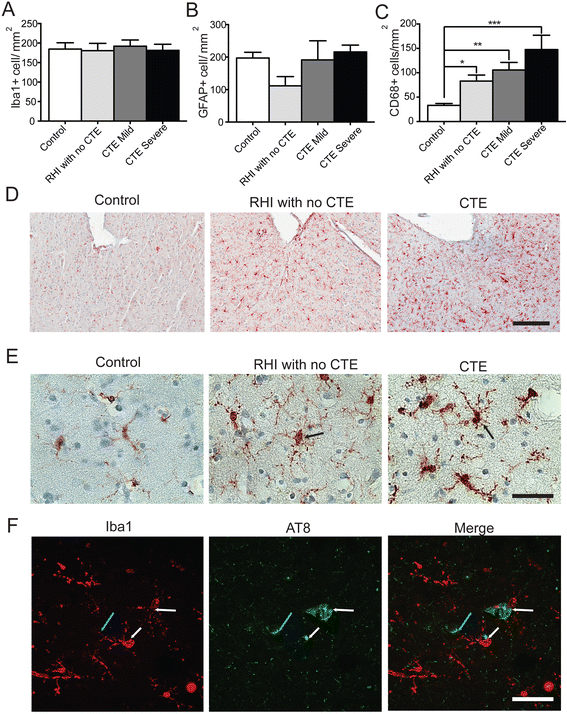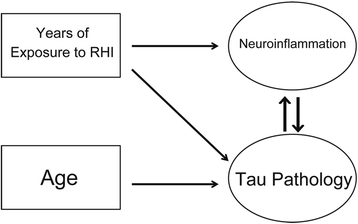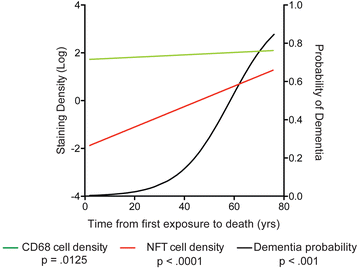Microglial neuroinflammation contributes to tau accumulation in chronic traumatic encephalopathy
- PMID: 27793189
- PMCID: PMC5084333
- DOI: 10.1186/s40478-016-0382-8
Microglial neuroinflammation contributes to tau accumulation in chronic traumatic encephalopathy
Abstract
The chronic effects of repetitive head impacts (RHI) on the development of neuroinflammation and its relationship to chronic traumatic encephalopathy (CTE) are unknown. Here we set out to determine the relationship between RHI exposure, neuroinflammation, and the development of hyperphosphorylated tau (ptau) pathology and dementia risk in CTE. We studied a cohort of 66 deceased American football athletes from the Boston University-Veteran's Affairs-Concussion Legacy Foundation Brain Bank as well as 16 non-athlete controls. Subjects with a neurodegenerative disease other than CTE were excluded. Counts of total and activated microglia, astrocytes, and ptau pathology were performed in the dorsolateral frontal cortex (DLF). Binary logistic and simultaneous equation regression models were used to test associations between RHI exposure, microglia, ptau pathology, and dementia. Duration of RHI exposure and the development and severity of CTE were associated with reactive microglial morphology and increased numbers of CD68 immunoreactive microglia in the DLF. A simultaneous equation regression model demonstrated that RHI exposure had a significant direct effect on CD68 cell density (p < 0.0001) and ptau pathology (p < 0.0001) independent of age at death. The effect of RHI on ptau pathology was partially mediated through increased CD68 positive cell density. A binary logistic regression demonstrated that a diagnosis of dementia was significantly predicted by CD68 cell density (OR = 1.010, p = 0.011) independent of age (OR = 1.055, p = 0.007), but this effect disappeared when ptau pathology was included in the model. In conclusion, RHI is associated with chronic activation of microglia, which may partially mediate the effect of RHI on the development of ptau pathology and dementia in CTE. Inflammatory molecules may be important diagnostic or predictive biomarkers as well as promising therapeutic targets in CTE.
Keywords: American football; CTE; Microglia; Mild traumatic brain injury; Neuroinflammation; Repetitive head impacts.
Figures



References
Publication types
MeSH terms
Substances
Grants and funding
LinkOut - more resources
Full Text Sources
Other Literature Sources
Medical

